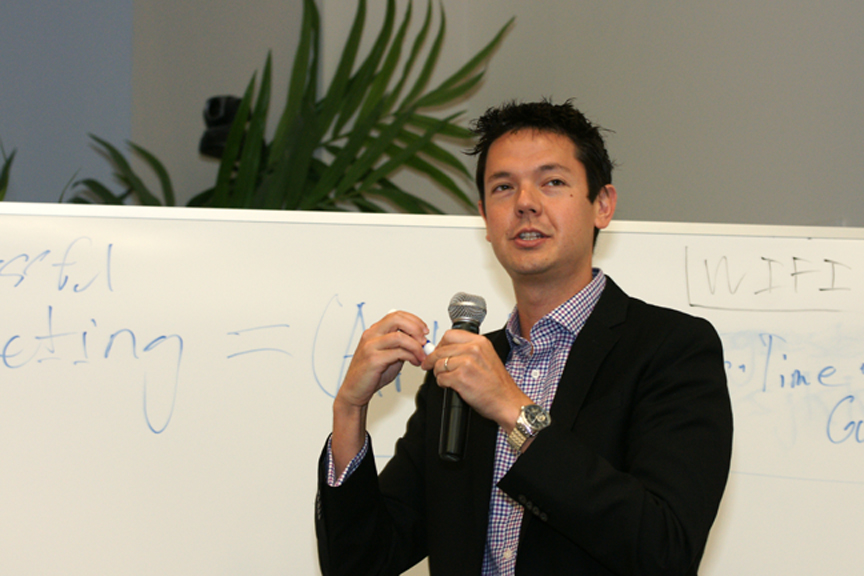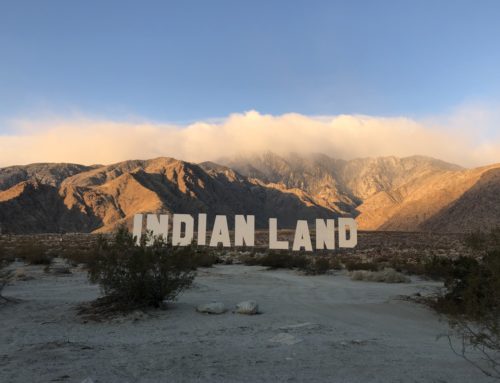“For small businesses, artists, and entrepreneurs, the only metric that matters is sales. It’s not about ‘the community.’ It’s about your customer.”
And with this quote from BJ Mendelsohn’s book, Social Media is Bullsh*t, Joseph Yoshitomi (pictured above) began the tactical marketing component of the October 12 workshop, Big Strategies and Real Tactics for Connecting Artists Audience, and Place, at UCR Palm Desert. California Desert Arts Council presented the program in partnership with Americans for the Arts’ National Arts Marketing Project.
Then in a Breakfast Club moment, Yoshitomi asked the audience of almost 100 arts professionals, “Who do you think you are?”
For his part, Yoshitomi is principal of Straightforward Management & Consulting in Culver City, Calif., and former vice president of marketing strategy for TheaterMania.com, a media and technology company connecting performing arts enthusiasts with theaters around the country. He draws from more than 15 years of work with Geffen Playhouse, Pasadena Playhouse, Orange County Symphony, and others, including individual artists.
As workshop participants took inventory to answer the question “Who am I?” Yoshitomi observed individual artists could respond easier than organizations. “Consider yourself or your organization an aggregation of your resources,” he intoned. “You are what you provide to your customer,” both tangible (things) and intangible (feelings and experiences).

Participants at the Oct. 12 Artists, Audience, and Place workshop deep in thought during an exercise on telling your story. Photo by Gregg Felsen.
Once you can clearly articulate who you are, “It’s important to be able to tell your story,” Yoshitomi said, emphasizing the power of YouTube as a storytelling platform. “It is the second-largest search engine after Google, it’s owned by Google, it’s intuitive and offers heavy analytics.”
First, in an interactive exercise, he helped participants gain a measure of storytelling clarity by concisely completing these sentences:
My story:
• We want to start a conversation with people about ____________________.
• When you think about our art or our work, the first three things that come to mind are ___________________.
• Our art or our work stands for_____________________________.
My customers:
• Once they have seen/learned about our art they will come back because _____________________.
• We grow our customer base by ___________________.
• Our content inspires people to ___________________.
“So you know who you are, the story you want to tell and how to tell it,” Yoshitomi said. “But whom do you tell it to? Who cares?”
Then he made a plea: “Please know your audience: Who are your customers and to what do they respond?”
He pointed to resources ranging from Google analytics and audience surveys and studies to Census.gov, industry associations, and Wallace Foundation material.
“Don’t rely on your perceptions,” he said. “Do this [customer inventory] periodically for trend analysis: we’re getting older, we’re getting younger, we’re expanding in new geographies, etcetera.”
Then fine-tune your value proposition — and avoid confusing it with your mission statement. Rather, it’s “an innovation, service, or feature intended to make a company or product attractive to customers.”
Like Nick Lowe sang in 1989, you have to be “Cruel to be Kind” when drafting your value proposition. Sometimes you have to be downright crude and transactional, like these examples:
• “Wealthy, older, white women come to us for entertainment and social affirmation from their peers.”
• “My mostly male millennial friends from my fraternity attend my performances to satisfy their duty to me to feel cool and culturally connected.”
• 40-year-old Latino males love Morrissey. Why?
Of course this exercise should be candid and confidential, as it’s the crude core of your marketing plan: art, resources, time, intention, and guests.
In “Nuts and Bolts Tactics for Arts Marketers, Part 2,” we will explore how to apply this information to your traditional and digital marketing.







